Слайд 3Ericaceae family:
Andromeda sp.
Calluna sp.
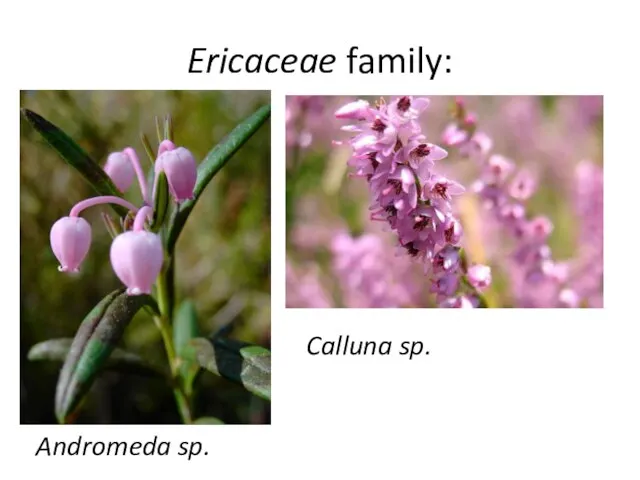
Слайд 6Plants of the olygotrophic swamps
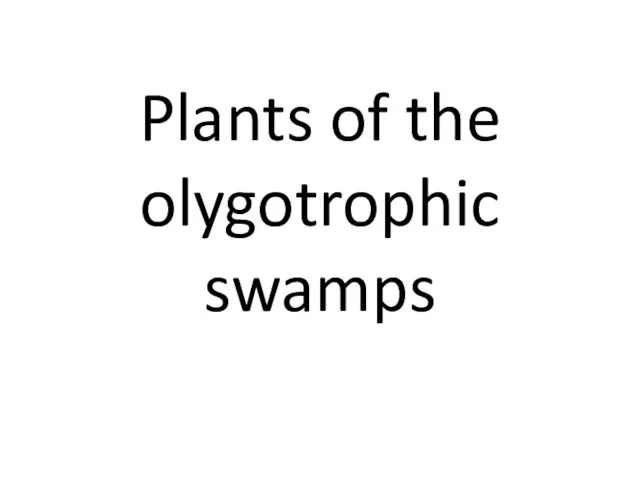
Слайд 8Khrugloe swamp in the Arkhangelsk region
It’s surface is covered with Sphagnum moss!

Слайд 9There are a lot of ecological factors, which is Chamaedaphne affected by.

Слайд 10Ecological factors
Lack of Nitrogen
Moisture
Drought
Low temperature
Excess of sun rays
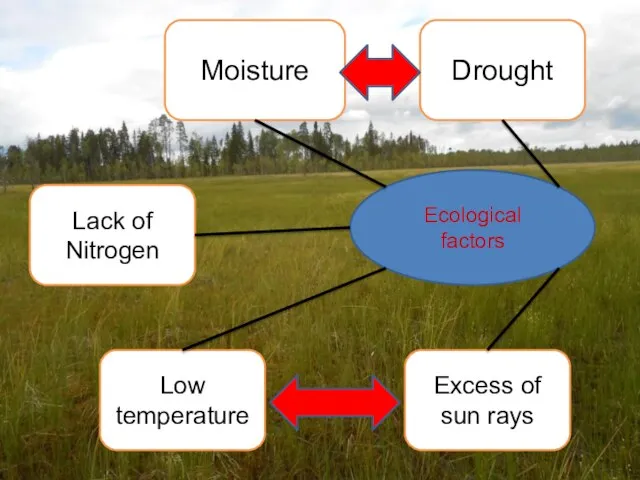
Слайд 11Special characteristics
Ecological factors
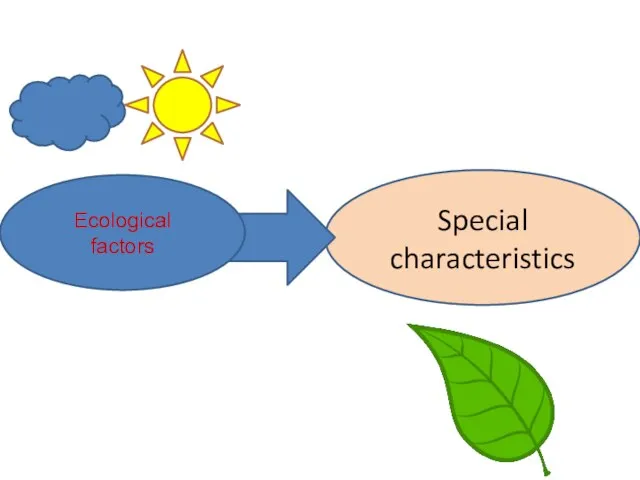
Слайд 12Due to such severe conditions, plants of swamps, or OXYLOPHYTES as Chamaedaphne,
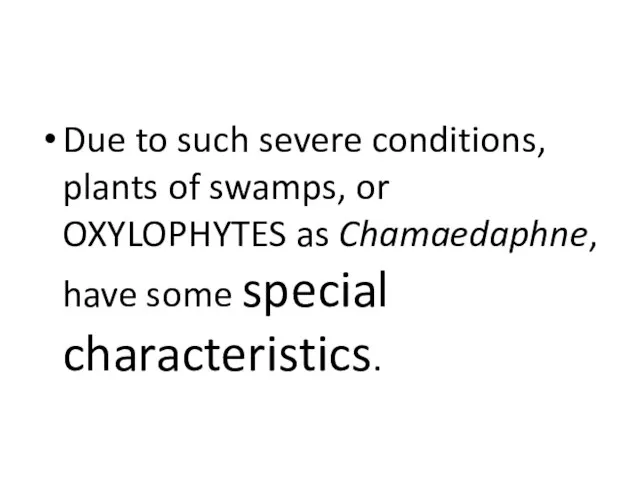
have some special characteristics.
Слайд 16leaves of Andromeda
are placed at an angle to the horizon.
Excess
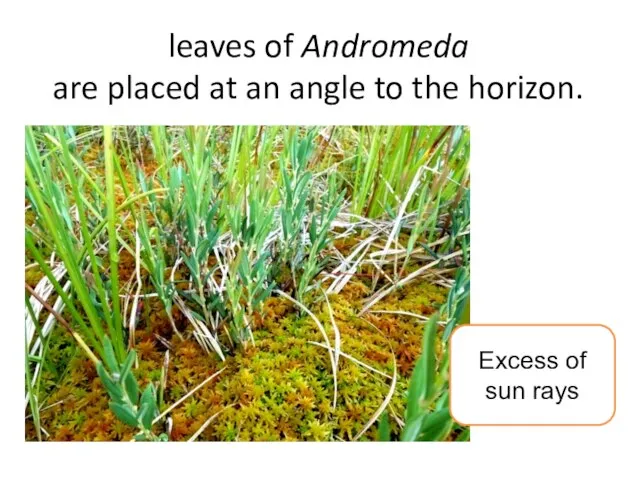
of sun rays
Слайд 172. The stem
FELLOGENE cells
FELLEM, or CORK
Lack of Nitrogen
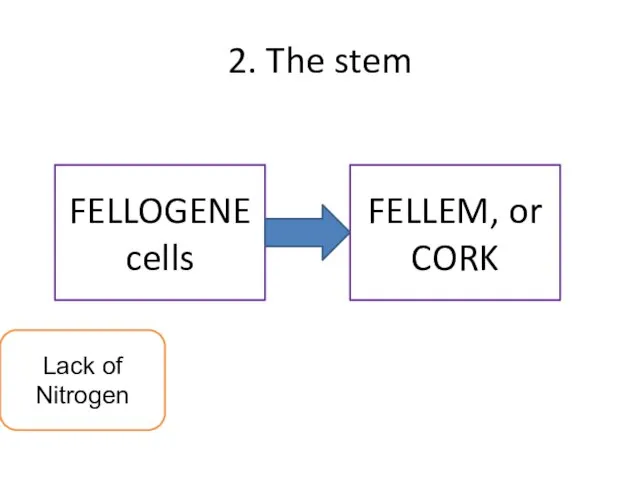
Слайд 18The stem
Stem of Chamaedaphne, and FELLOGENE cells
The stem
Lack of Nitrogen
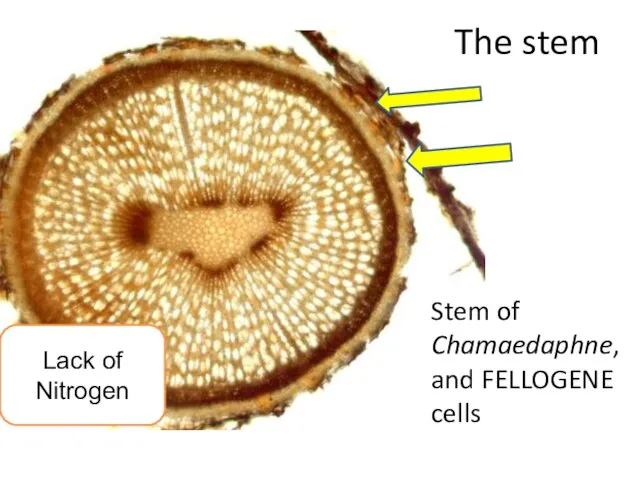
Слайд 19The stem. Tannins in the cork
A stem of Andromeda, Ericaceae
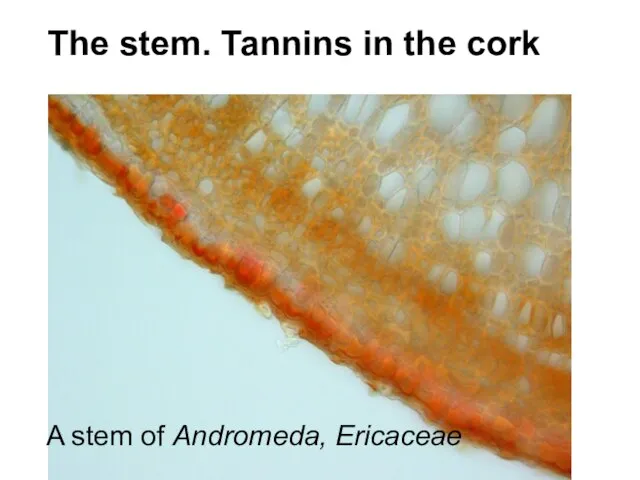
Слайд 20….has some special cells, which produce fellem.
…имеют специальные клетки, производящие пробку.

Слайд 211. Lack of nutrition
Olygotrophic swamps are water reservoirs which are poor with
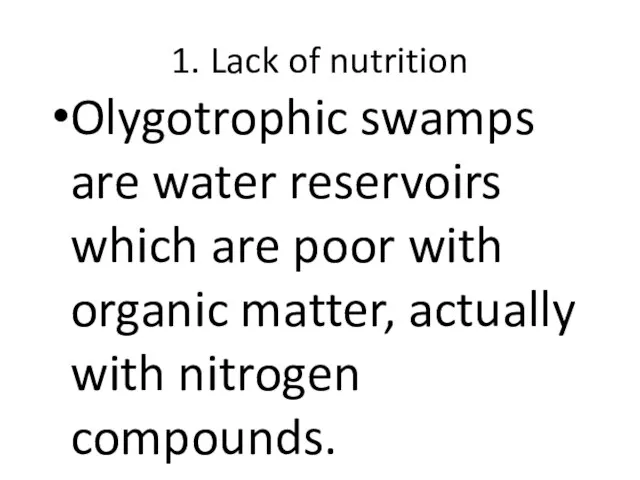
organic matter, actually with nitrogen compounds.
Слайд 22For example, plants of Ericaceae family –
Например, растения семейства Вересковых -
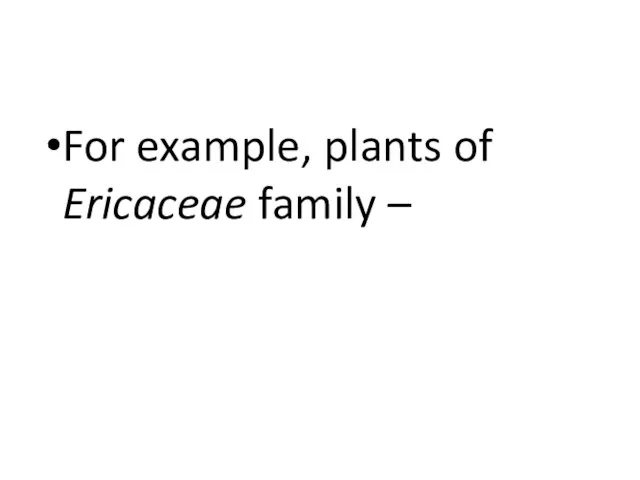
Слайд 23- Andromeda polifolia,
- Подбел многолистный,
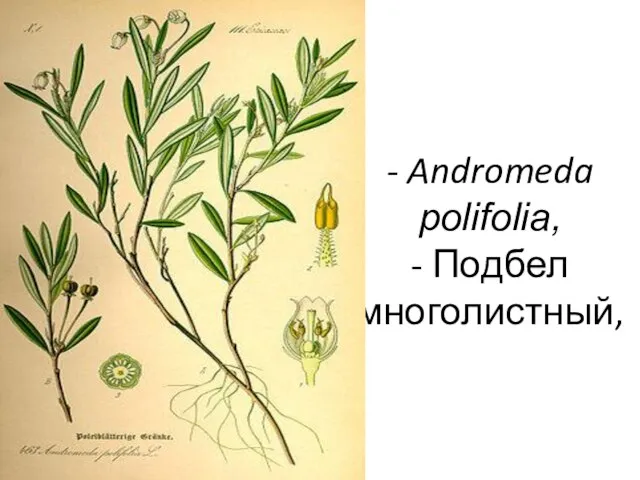
Слайд 24- Chamaedaphne calyculata, …
…Мирт болотный,…

Слайд 25These cells, or FELLOGENE cells, also are A BORDER between a stem

and some outer tissues, which are to be separated from the stem.
Эти клетки, или клетки ФЕЛЛОГЕНА, также находятся на ГРАНИЦЕ стебля и других тканей коры, которые затем отваливаются от стебля.
Слайд 26So the parts of tissues located ABOVE the FELLOGENE separate from the
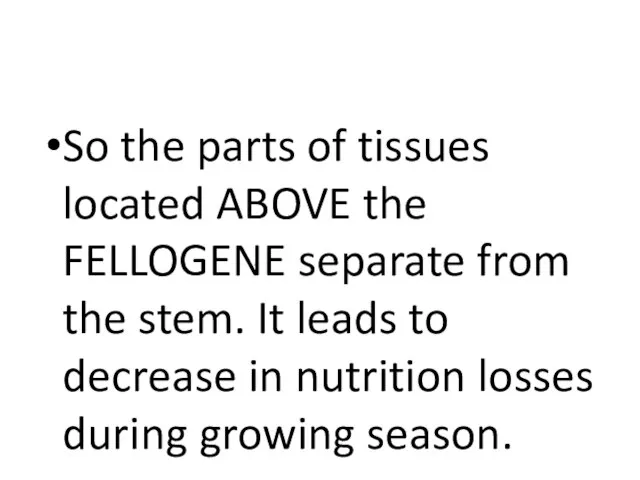
stem. It leads to decrease in nutrition losses during growing season.
Слайд 272. Low temperature
These swamps are regions with relatively low-temperatured soil.
Олиготрофные болота
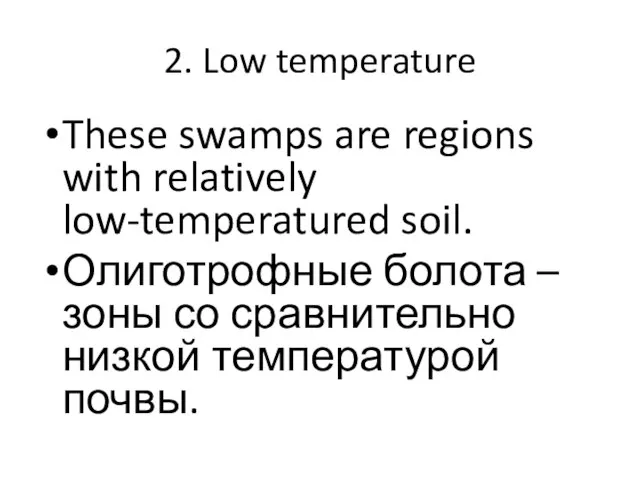
– зоны со сравнительно низкой температурой почвы.
Слайд 28It influences badly on roots, because absorption of water is complicated.
Это плохо
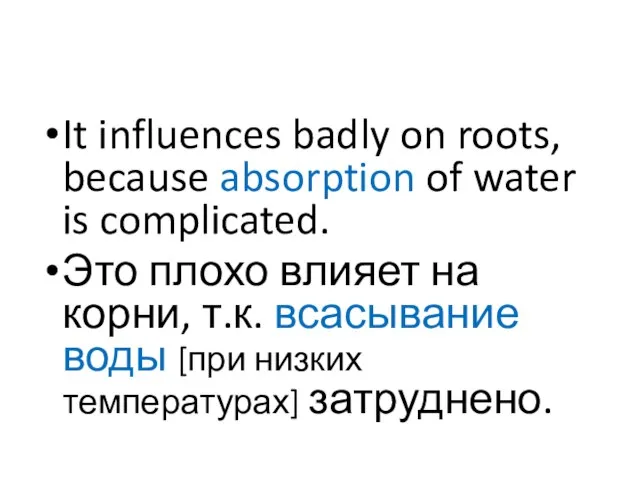
влияет на корни, т.к. всасывание воды [при низких температурах] затруднено.
Слайд 29On the other side, the sun rays reach plants very fast, which
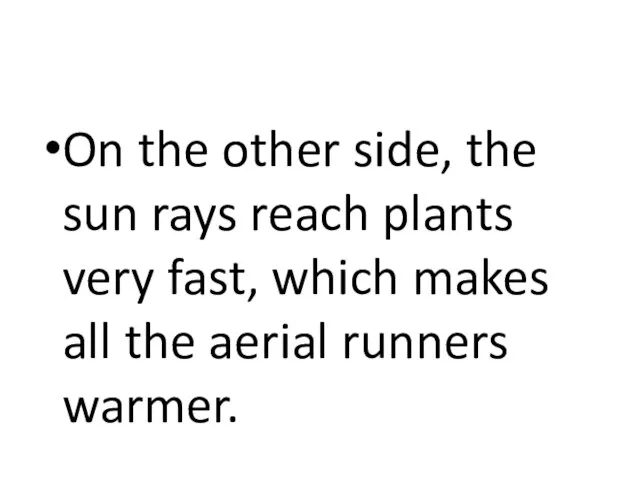
makes all the aerial runners warmer.
Слайд 30But leaves of Chamaedaphne (мирт) also have double layers of photosynthetic tissue
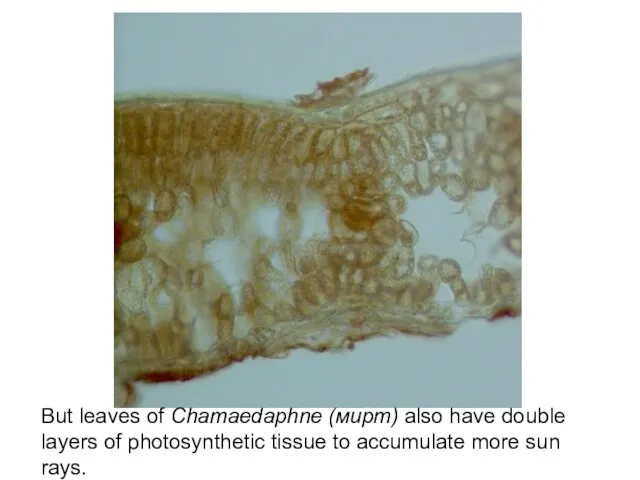
to accumulate more sun rays.
Слайд 31As a result, subterranean organs of OXYLOPHYTES are subjected to cold, but
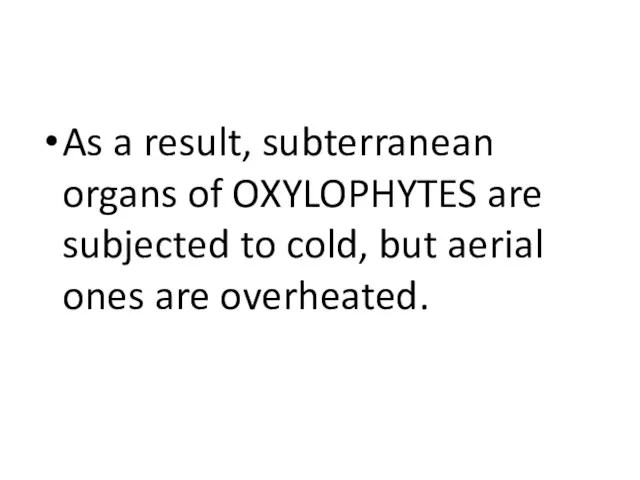
aerial ones are overheated.
Слайд 32Tannins in the cork
A stem of Andromeda
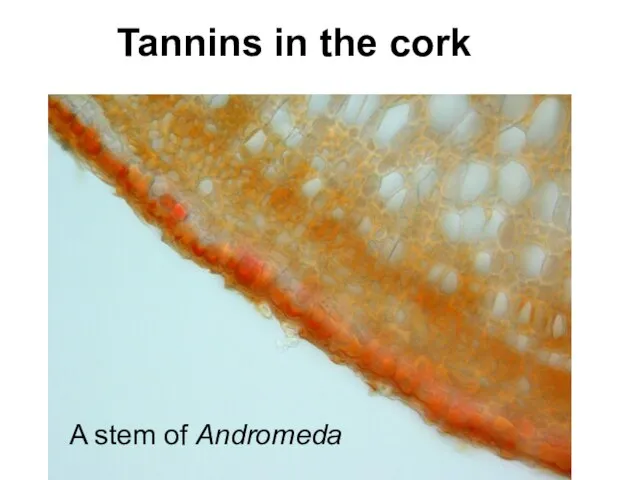
Слайд 33It contributes to decrease influence of solar rays.
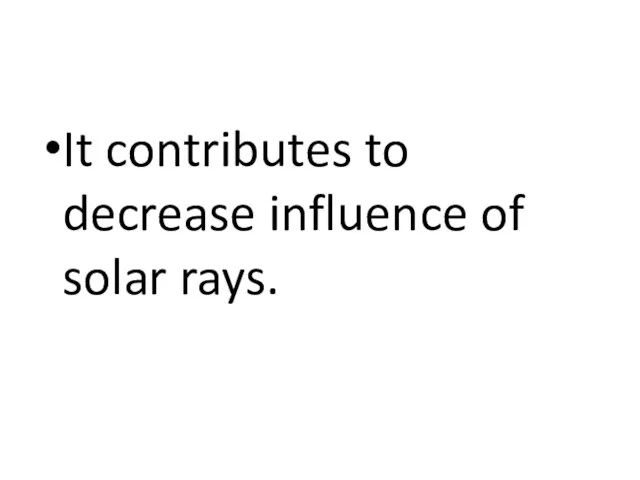
Слайд 343. Water excess
Finally, the soil of olygotrophic swamps is very MOISTENED,
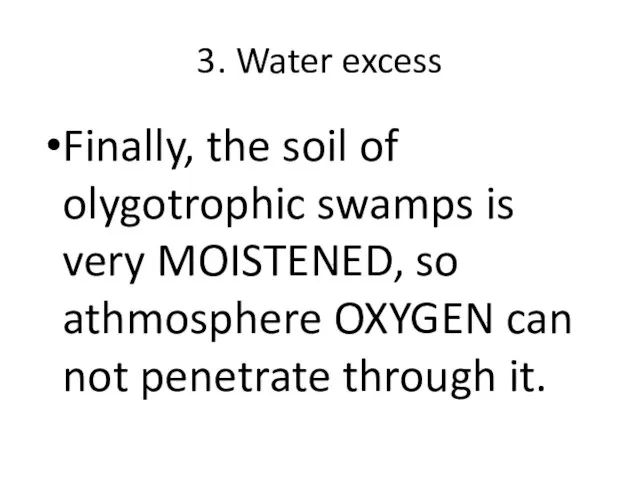
so athmosphere OXYGEN can not penetrate through it.
Слайд 353. The roots
H+
H+
H+
H+
H+
H+
H20
H20
H20
H20
Moisture
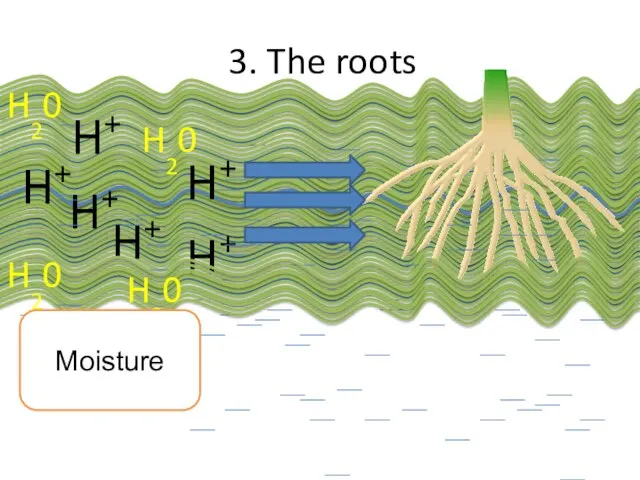
Слайд 36According to this, roots do not get enough oxygen for respiration.

Слайд 37And OXYLOPHYTES have some adaptations for breath:
They possess special tissue termed
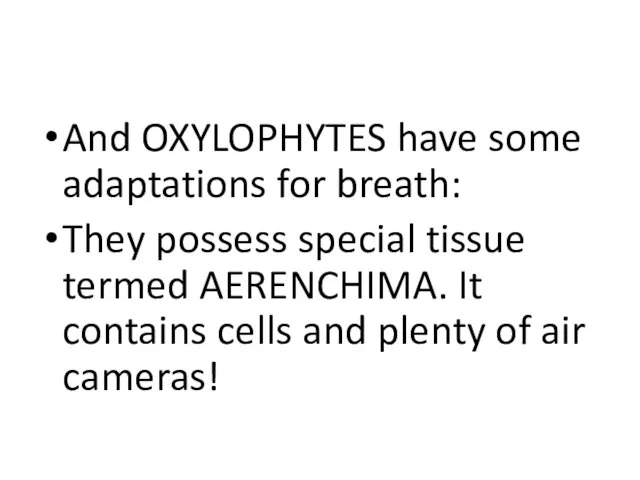
AERENCHIMA. It contains cells and plenty of air cameras!
Слайд 39Aerochima in
Menyanthes trifoliata rhizome
(вахта трехлистная)

Слайд 40Aerochima of Eriophorum (пушица):
stem
leave
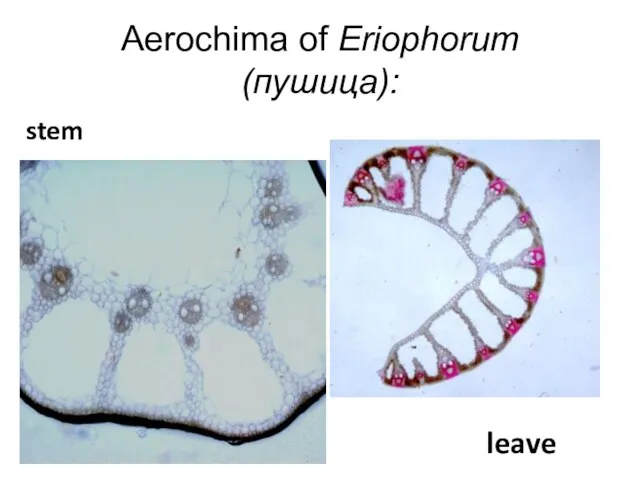
Слайд 41There are much more ecological factors, which influence on the OXYLOPHYTES; these
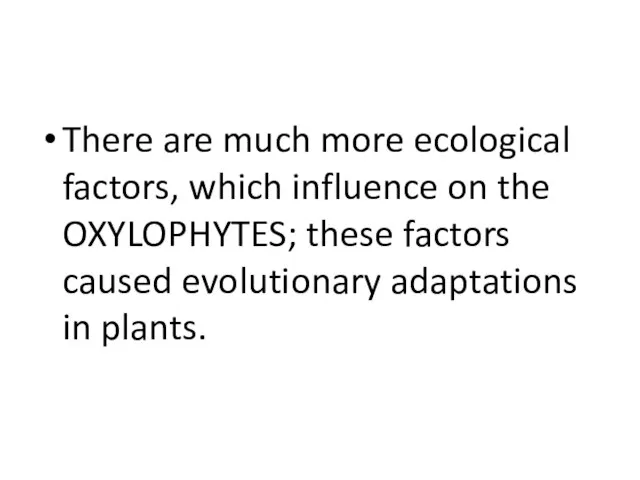
factors caused evolutionary adaptations in plants.
Слайд 42So the plants of olygotrofic swamps are adapted to high and low
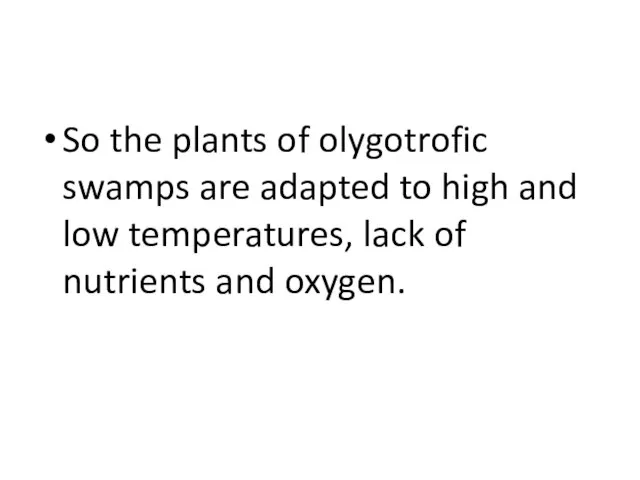
temperatures, lack of nutrients and oxygen.



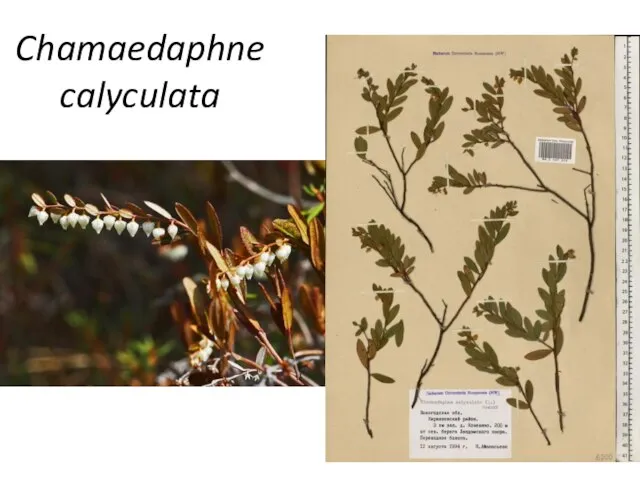

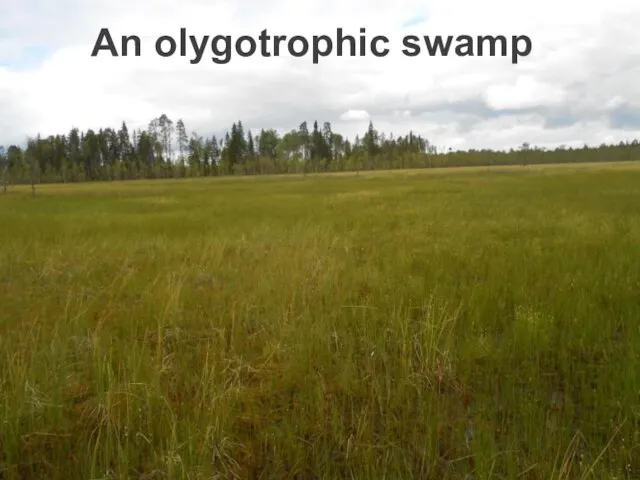





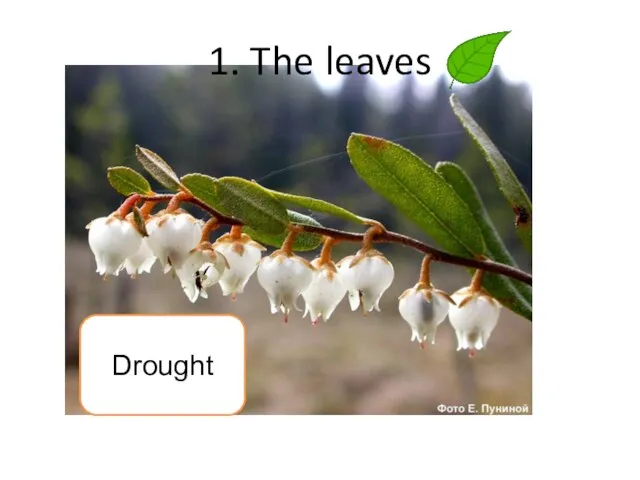

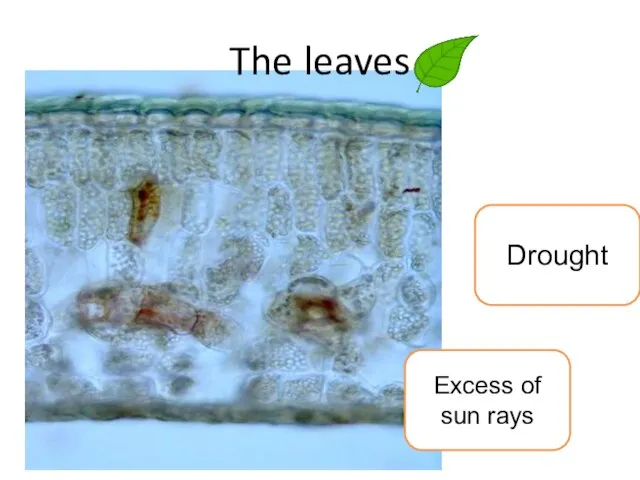






















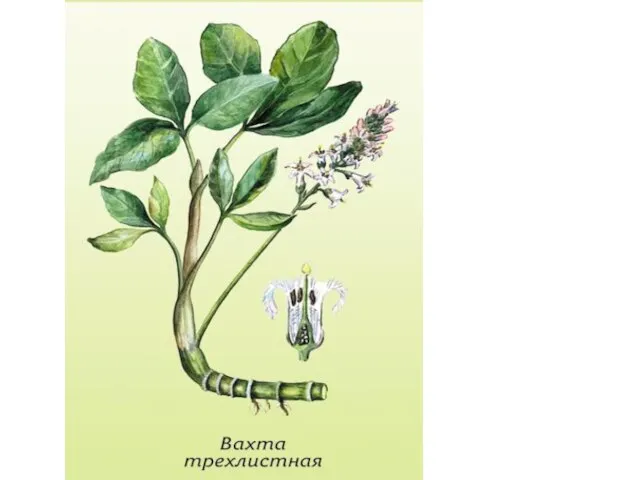




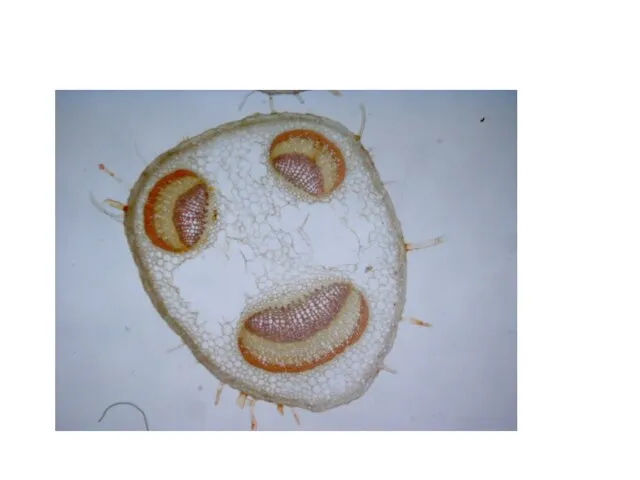
 Костная система человека
Костная система человека Меры безопасности при применении пестицидов. (Лекция 22)
Меры безопасности при применении пестицидов. (Лекция 22) Организм - открытая живая система (9 класс)
Организм - открытая живая система (9 класс) Деление клеток
Деление клеток Конечный мозг: боковые желудочки, комиссуральный аппарат, обонятельный мозг
Конечный мозг: боковые желудочки, комиссуральный аппарат, обонятельный мозг Наш родной край. Животный мир Новосибирской области
Наш родной край. Животный мир Новосибирской области Кровеносная система и её заболевания
Кровеносная система и её заболевания Витамин К (филлохинон)
Витамин К (филлохинон) Топография и биодинамика опорно-двигательного аппарата
Топография и биодинамика опорно-двигательного аппарата Австралия на карте мира (6)
Австралия на карте мира (6) Выделение HCl париетальными клетками
Выделение HCl париетальными клетками 4.4 Побег. Видоизменения побегов. Стебель. (1)
4.4 Побег. Видоизменения побегов. Стебель. (1) Фауна различных материков
Фауна различных материков Научно-исследовательская работа Правильный сон - залог здоровья
Научно-исследовательская работа Правильный сон - залог здоровья Обмен веществ и энергии. Энергетический обмен и его этапы
Обмен веществ и энергии. Энергетический обмен и его этапы Құрғақ және қуаң дала фаунасы
Құрғақ және қуаң дала фаунасы Презентация на тему Тип инфузории
Презентация на тему Тип инфузории  Кровеносная система
Кровеносная система Анатомия печени
Анатомия печени И властелин, и тварь земная
И властелин, и тварь земная Мышечные ткани
Мышечные ткани Нарушения кожных покровов и повреждения кожи
Нарушения кожных покровов и повреждения кожи Отряд перепончатокрылые
Отряд перепончатокрылые Бойдус - чер кырында амыдыралдыӊ үнер дөзү, чаяакчызы. Куштар база кижи ышкаш бойдустуӊ чаяакчызы
Бойдус - чер кырында амыдыралдыӊ үнер дөзү, чаяакчызы. Куштар база кижи ышкаш бойдустуӊ чаяакчызы Презентация на тему Отдел Голосеменные. Общая характеристика
Презентация на тему Отдел Голосеменные. Общая характеристика  Презентация на тему Учение Ч. Дарвина об искусственном отборе
Презентация на тему Учение Ч. Дарвина об искусственном отборе  Что такое почва?
Что такое почва? Ягоды
Ягоды